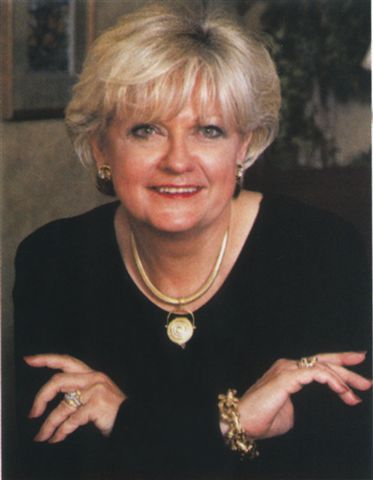
Louise Cutting, one of four Threads' contributing editors
Threads is fortunate to include 4 amazingly talented contributing editors on our masthead: Louise Cutting, Susan Khalje, Kenneth D. King, and Mary Ray. They are each an expert in their area of sewing interest—but their interests are extremely varied. This blog will focus on Louise. You can read about Mary, Kenneth and Susan in previous blog posts. We want you to get to know them the way we know them—as more than simply a Threads author.
I asked Louise several questions, and I know you’ll enjoy reading her answers.
Threads: How would you describe your current career? What’s your favorite part?
Louise: My current career primarily involves pattern drafting and turning out new Cutting Line patterns several times a year. I create the cover illustrations as well as the instruction illustrations, and my assistant, Sandy Miller, edits the copy for the pattern step-by-steps. I’m proud of the fact that my pattern collection is often attributed with the best instructions found in the entire independent-pattern industry. People tell me that when they read my instructions, it’s like having me next to them when they sew. They tell me they even use my pattern directions when they sew from another pattern line to find a better way to get a good end result! I also teach sewing, but I focus on what designers do on the inside of their garments to make the garments look better and more professional. In fact Threads produced two videos featuring my Industry Insider Techniques.
I’m on the road like crazy and I’m starting, once again, to offer sewing schools. Here in Orlando I have 3 sewing schools coming up. Sandy Miller and I will teach them jointly. They include 3 days of intensive fitting for a pair of one-seam pants and 2 days of techniques. In addition Linda Lee and I offer sewing retreats in Orlando—one in January and one in October. The students sew patterns from Linda’s and my pattern lines, and we help them get a good fit. The students come to get away from their everyday lives so that they can sew full time. It’s their “golf weekend.” Everyone works at their own level, and Linda and I are available for one-on-one assistance.
Threads: What part of your current sewing space do you love the most? Why is it so terrific?
Louise: I designed it, so it has everything I could possibly want. I removed a wall between two bedrooms and created a 18×22 foot space. I have a huge cutting table with a grid cutting mat on top. I have a bank of sewing machines and sergers and a wall lined with stored fabric (in Florida, this is considered great insulation!). The only thing I don’t like is that I don’t have enough time to sew. The business end of things takes up too much of my time.
Threads: Did you always anticipate working in the “sewing” arena or did your life evolve in that direction at a later time?
Louise: I always knew I would be involved with fashion in some manner even when I was a child. I was drawn to it when I was as young as 3 years old. I just simply loved fashion. I loved paper dolls (some people call them cut-outs) and just couldn’t get enough of them. As a matter of fact, I often drew my own. Years later I was trained as a fashion illustrator, and at my first job out of college I did fashion illustrations for a department store in Indianapolis. I sold my first garment in 6th grade.
Threads: What do you treasure the most about your career? Why?
Louise: I treasure my independence the most. My mother was way ahead of her time. Her mother was an educator; her father was a doctor, and his two brothers were doctors, so she grew up in a working household. As I grew up, my mother’s advice was simple: “Have a trade that you can fall back on—something that you can do by yourself and make money. Don’t rely on somebody else. Your name may be over the building’s door, but you need to know how to do every job in there.” Her advice has bode me well thoughout my life.
Threads: Was your very first experience with sewing a good experience?
Louise: Yes. My mother, father, and grandmother all sewed. My grandmother was a dressmaker, and when I visited her house, I got to use the scraps falling down as she sewed. I would wrap them around my baby dolls to create new “fashions” for them.
At one time my father wanted to buy my mother a new sewing machine—which actually meant he wanted to buy a new sewing machine for himself! He placed an ad in the local newspaper to sell the old machine. While he waited for a buyer, the Kenmore in its cabinet was placed in my bedroom. It ended up never being sold, and as a result, I had my own sewing machine when I was probably 6 years old.
Although I was allowed to sew, I wasn’t allowed to touch the iron. I had several Ginny dolls and used to sew for them. [Editor’s note: Ginny dolls were about 6 inches tall and represented an 8 or 9 year-old little girl, unlike the Barbie dolls of today.] One time my parents discovered a pair of acetate doll pants glued to the bottom of the iron. Oops!
I sewed and sewed and sewed clothes for the Ginny dolls—patterns were actually available. I also had a number of purchased outfits for my dolls and lots of accessories. They were made with incredible detail and hand work. The fur coat was lined; the snap was sewn on by hand; a one-inch zipper was beautifully inserted; the lace was added with bias binding. I think noticing the fine detail in the doll clothes at that time has most certainly influenced my love for garment details today.
Threads: Do you have any advice for people just starting to explore sewing and/or design?
Louise: Learn how to sew. If you’re going into design, you need to know how to sew first. Young people today think they will become the next big designer without knowing how to sew, but let’s face it, that’s highly unlikely. Many well-known “designers” today (like Jacqueline Smith for K-Mart) aren’t really designers. They’re just a figurehead. You have to know the business to be really successful. When I taught fashion illustration and fashion design in college, every student imagined herself as the new head fashion illustrator for a big department store. The reality is that the big department stores already had a great fashion illustrator, and they weren’t going to get rid of that person every June to hire the new kid on the block. You have to make yourself exceptional. My advice is to know ALL of the rudiments of the business. No matter what school you go to, learn beyond the teacher. You’re only as good as the teacher. If she’s adequate at best, then you’re going to be less than that unless you put in extra effort. Learn everything you can—not only what they’re teaching you, but more. Use books; use the internet and any other source you can find, and learn as much as you can about the business in general as well as the broader industry.
Threads: Have you ever encountered a catastrophe that caught you by surprise? What did you learn from it? How did you handle it?
Louise: At one time I owned fabric stores (until I experienced 3 hurricanes in 45 days!), and I adored one of the fabrics that I sold. It was a simply delicious, costly fabric that had an unknown fiber content. I used the fabric to make a dress for a wedding I planned to attend. I wanted to interface one part of the dress to beef it up a little bit. I preshrunk the interfacing, but didn’t bother to preshrink the fabric since I knew the garment would be dry-cleaned. The fabric had little multi-colored, 3/4-inch-wide squares that were about 2 inches apart. I pressed the interfacing on. The body of the fabric shrunk, but the tiny squares didn’t. I pressed it again hoping to fix it, but the body of the fabric shrunk even more. The more I pressed it, the worse it got. It was like the fabric had multi-colored popcorn stuck to it. I had to abandon the dress, and it hung in the back of the closet for years. Finally I started cutting into it to use it as samples and took the front of the jacket to show THE MISTAKE when I teach. The only good thing about mistakes is that we can learn from them.
Have you been fortunate enough to take a class from Louise? If so, please tell us about it.


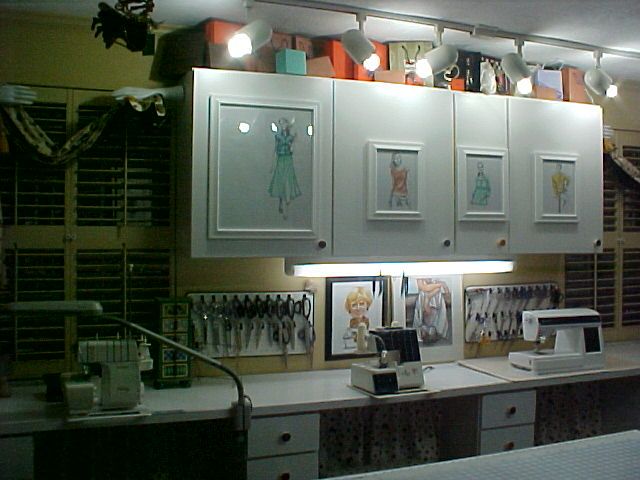
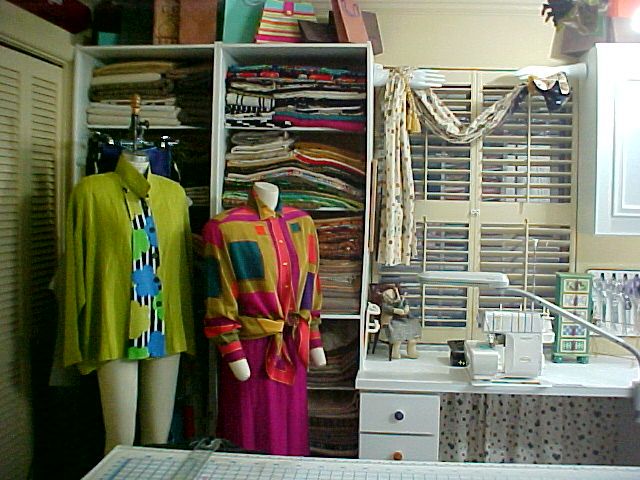
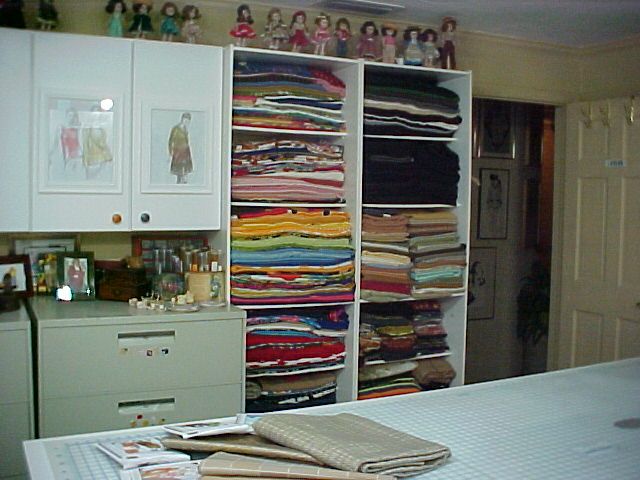
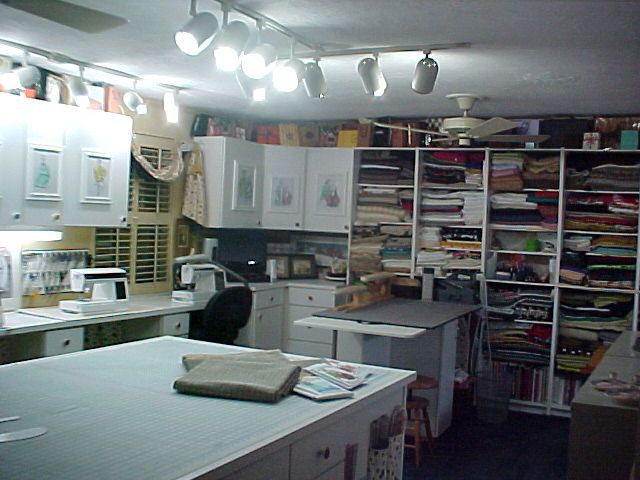
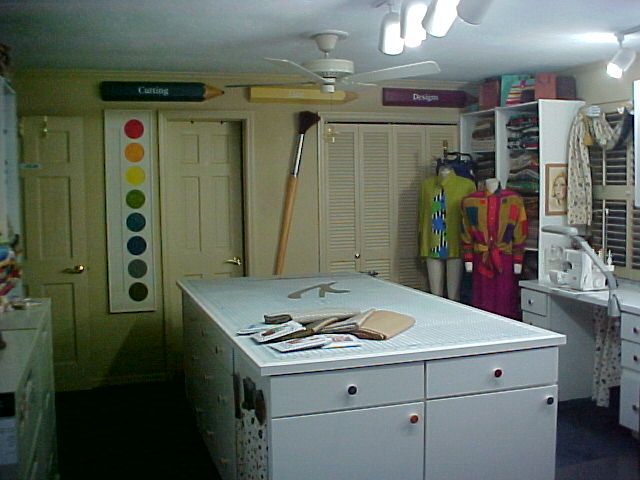
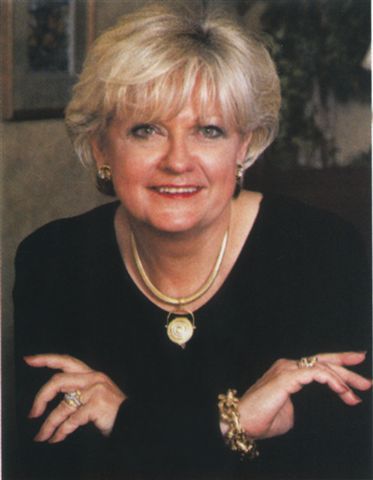
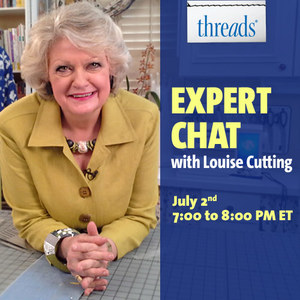



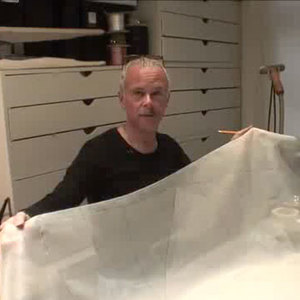























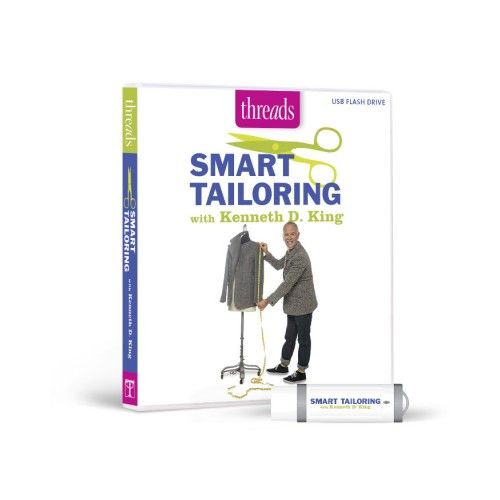
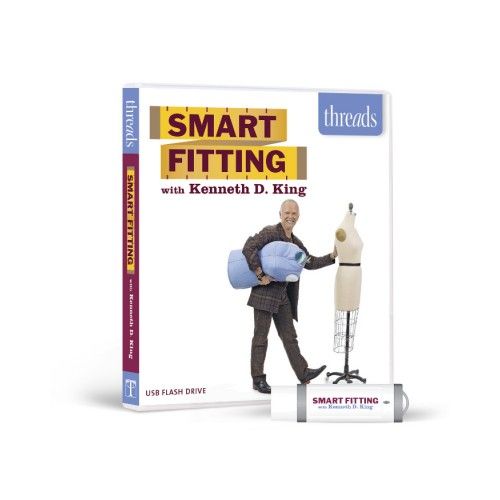
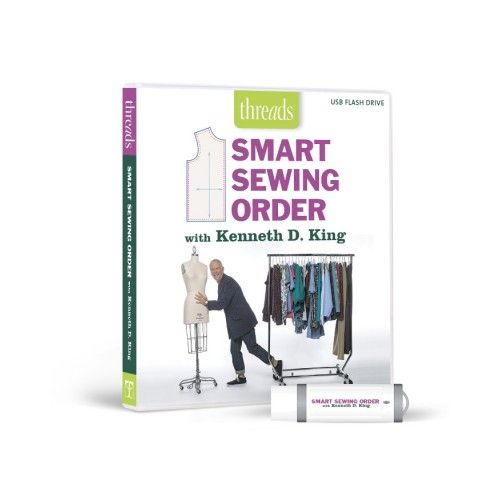



Our Sewing Guild will be talking about our sewing spaces next month. I've already forwarded the link from this article to our Neighborhood Group Leader. This is what I'd LOVE for my room to look like! I'm very fortunate to have a room that's dedicated to sewing but I have so much stacked, tucked, and crammed in here that I tend to lose focus. I daydream about what I want my space to look like. Louise's space gives me great ideas! I always enjoy her classes & booth at Expo in Atlanta each year. I enjoyed reading about her sewing experiences when she was growing up. Thank you for the article!